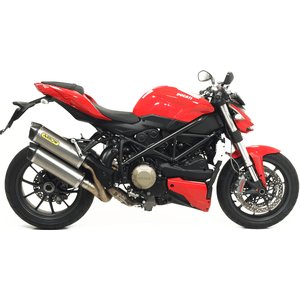Ducati Streetfighter 1100 [2009-2012] Review: The Untamed Italian Naked
Introduction
When Ducati stripped the fairings off their 1098 superbike and unleashed the Streetfighter 1100 in 2009, they didn’t just create a motorcycle—they forged a snarling declaration of rebellion. This wasn’t a bike designed to coddle riders with practicality or compromise. It was a raw, unapologetic celebration of power, agility, and Italian engineering theatrics. Over its production run until 2012, the Streetfighter 1100 remained a benchmark for liter-class naked bikes, combining track-bred DNA with streetfighter swagger. Let’s dissect why this machine still commands respect—and adrenaline—over a decade later.
Riding Experience: A Symphony of Controlled Chaos
The Heart of the Beast: L-Twin Fury
At the core of the Streetfighter 1100 lies Ducati’s 1099cc Desmodromic L-twin, a powerplant that feels like it’s perpetually spoiling for a fight. With 155 HP @ 9,500 RPM and 115.3 Nm (85 lb-ft) of torque, this engine doesn’t just accelerate—it detonates. Twist the throttle, and the V2’s punch is immediate, surging forward with a ferocity that’s borderline antisocial. The 6-speed gearbox slots with mechanical precision, though the dry clutch (a signature Ducati quirk) delivers a satisfyingly industrial rattle at idle—a siren song for enthusiasts.
Low-End vs. High-RPM Character:
- Below 4,000 RPM, the engine feels restrained, almost polite. But cross that threshold, and the Streetfighter transforms. By 6,000 RPM, the exhaust note hardens into a metallic howl, and the horizon starts rushing at you with illegal intent.
- The Desmodromic valve system ensures razor-sharp response, eliminating valve float even when bouncing off the 10,500 RPM limiter.
Chassis and Handling: Trellis Mastery
Ducati’s tubular steel Trellis frame isn’t just a structural component—it’s a work of art. Paired with a 25.9° rake and 58.1-inch wheelbase, the Streetfighter strikes a balance between stability and aggression.
On the Road:
- City Riding: The upright bars and narrow profile make filtering through traffic surprisingly manageable, though the engine’s heat radiating from the 2-1-2 exhaust can toast your thighs in summer.
- Canyon Carving: Here’s where the Ohlins suspension shines. The fully adjustable 43mm USD fork and monoshock swallow mid-corner bumps without upsetting the bike’s line. Lean-in is intuitive, and the Pirelli Diablo Rosso tires (stock fitment) offer enough grip to flirt with knee-down territory.
Braking: MotoGP-Grade Stoppage
Brembo’s dual 320mm discs and 4-piston calipers up front deliver apocalyptic stopping power. Initial bite is aggressive—a light two-finger squeeze is all you need—but modulation improves with familiarity. The rear single disc is adequate, though most riders will rely on the front for hard deceleration.
Design and Aesthetics: Brutalist Beauty
The Streetfighter’s design language screams “unrestrained.” The matte-black Trellis frame contrasts violently with the可选的红/黑或珍珠白/黑涂装。肌肉发达的油箱(可容纳 12.4 升燃油)向后倾斜至激进的后部副车架,而双钛合金消声器则像一对加农炮一样从座椅下方伸出。
Standout Features:
- Exhaust System: The 2-1-2 setup with titanium mufflers isn’t just lightweight—it’s a sonic masterpiece. At full tilt, it emits a guttural bark that’s equal parts Euro fighter jet and MotoGP racer.
- Minimalist Dash: A monochrome LCD screen provides essential data (speed, RPM, fuel), but this is a bike that prioritizes analog thrill over digital clutter.
Competition: How the Streetfighter Stacks Up
The late 2000s/early 2010s naked bike arena was a gladiatorial pit. Here’s how the Ducati fared against rivals:
1. Aprilia Tuono V4R (2011-2015)
- Pros: Aprilia’s 167 HP V4 offered more peak power and a smoother ride-by-wire throttle.
- Cons: Lacked the Streetfighter’s theatrical edge. The Ducati’s L-twin delivered torque lower in the rev range, making it more explosive in real-world riding.
2. KTM 990 Super Duke R (2008-2013)
- Pros: KTM’s LC8 engine was torquier (100 Nm) and the chassis more forgiving for wheelie addicts.
- Cons: The Duke’s build quality felt plasticky next to the Ducati’s forged components.
3. MV Agusta Brutale 1090 RR (2009-2016)
- Pros: The MV’s 144 HP inline-4 revved sweeter and had a jewel-like finish.
- Cons: Maintenance costs were stratospheric, and the riding position was less comfortable for tall riders.
Verdict: The Streetfighter 1100 wasn’t the most powerful or refined, but its combination of visceral feedback, iconic design, and Ducati’s racing pedigree made it the segment’s emotional leader.
Maintenance: Keeping the Beast Alive
Key Considerations:
- Desmodromic Valves: Ducati’s valve adjustments every 12,000 km (7,500 miles) are non-negotiable. DIYers can tackle this with a shim kit, but first-timers should consult a specialist.
- Clutch Wear: The dry clutch is durable but prone to rattling. Upgrade to a STM slipper clutch (available at MOTOPARTS.store) for smoother downshifts.
- Exhaust Upgrades: The stock system is heavy. A Termignoni or Akrapović full exhaust saves 4-5 kg and unlocks ~8 HP.
- Suspension Tuning: The Ohlins units need regular rebound/compression adjustments based on riding style. We recommend MOTOPARTS.store’s suspension service kits.
Must-Have Upgrades:
- Brake Pads: Swap stock pads for Brembo Z04 sintered pads for cooler running and better bite.
- Cooling: Install an aftermarket oil cooler guard to protect the radiator from debris.
- Ergonomics: Replace the stock seat with a Sargent Comfort seat for rides over 2 hours.
Conclusion: A Modern Classic
The Ducati Streetfighter 1100 isn’t a motorcycle for the faint-hearted—or those who value fuel economy. It’s a primal, unfiltered experience that rewards skilled riders and punishes complacency. The V2’s brutality, razor-sharp handling, and head-turning design have aged like a fine Barolo. For owners, MOTOPARTS.store offers everything from OEM-spec replacement parts to race-ready upgrades, ensuring your Streetfighter remains the king of the urban jungle.
Whether you’re chasing knee-dragging glory or just want to wake up the neighborhood, the Streetfighter 1100 delivers—one earth-shaking rev at a time.



















